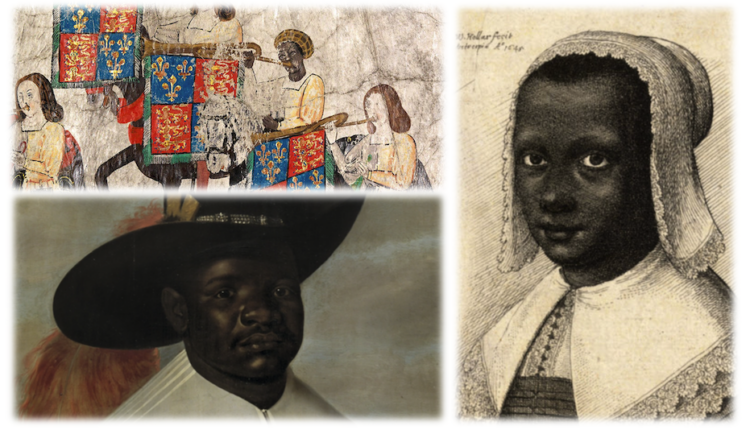Most history teachers I speak to, want to include more diversity into their curriculum.
Many realise that the present version of the National Curriculum is very British focused. And, history taught at university covers a whole host different perspectives and topics.
Yet this isn’t sometimes reflected in the KS3 curriculum. Why not?
Some departments have done a cracking job diversifying their entire KS3 curriculum.
Others have struggled.
The thing that is stopping many from doing this is time. Others note a lack of resources – or access to resources.
Let’s face it, teaching is difficult. It is all consuming. Although we realise a need to add more diversity in our curriculum. Finding the time and resources to do this often proves difficult.
3 ideas to add diversity
So, to help here are three simple ideas to help you to add diversity into your curriculum.
They are aimed at the Medieval and Early Modern sections of the curriculum.
This is because it is harder to find meaningful examples from these periods to help diversify your curriculum.
You could sprinkle these in to your present curriculum.
Each approach is fully resourced and ready for you to access immediately.
Idea 1: Diversify your Medieval Overview
Overviews are a great way to get pupils to see the big picture of what your unit is all about.
Read more on overviews here.
So why not start your medieval unit with an overview that is more diverse?
This example starts off with events that pupils will know and shows them on a timeline.
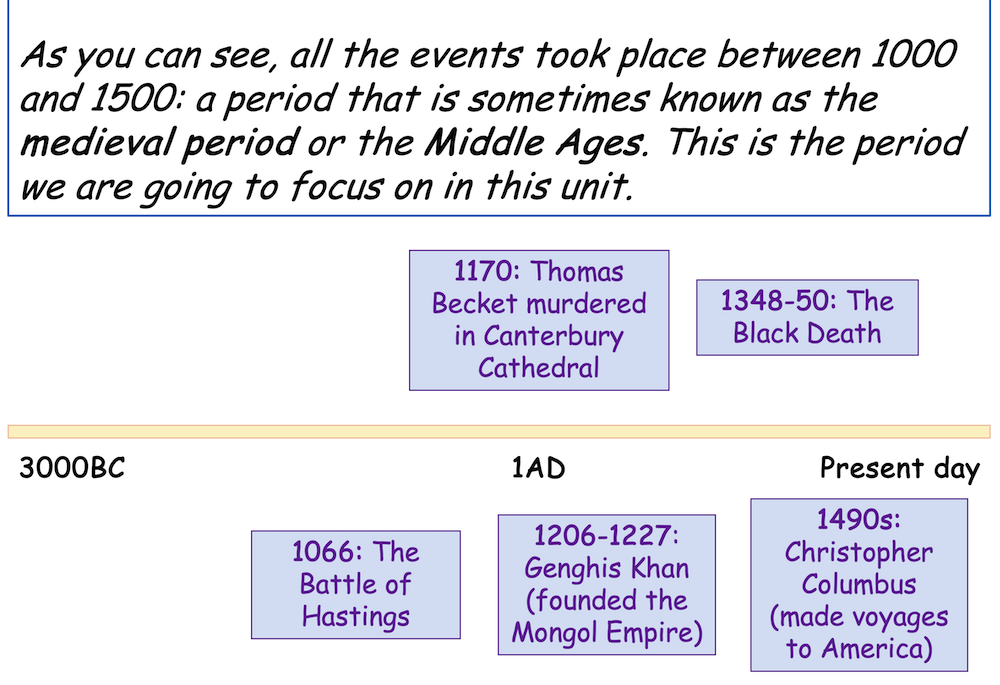
Then pupils are introduced to the famous Italian chap called Leonardo Bruni. Born in Italy in 1370, Bruni was an important historian.
One of the things that Bruni is known for is dividing history into three periods. According to Bruni, there was Antiquity, the Middle Ages, and the Modern period.
Bruni had a pretty negative view about the ‘Middle Ages’, as you can see here:
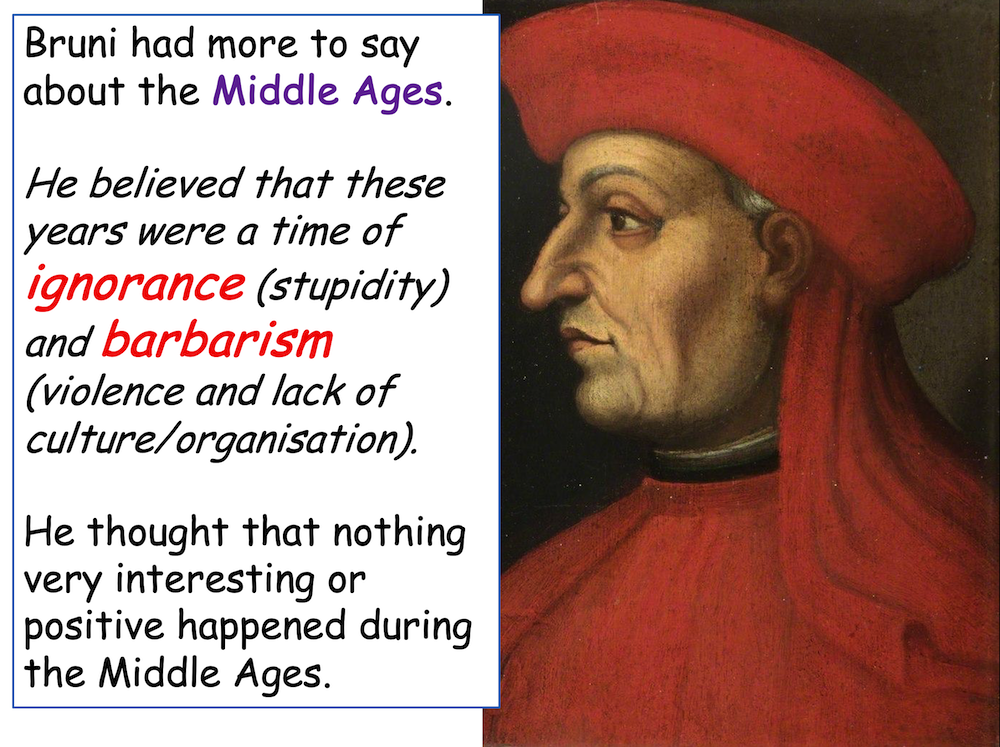
So, the main tasks asks: was Bruni right? Were the Middle Ages really a time of ignorance and barbarism?
The pupils are introduced to some clue cards, which the classify into four groups:
- Ordinary peoples’ lives
- Money and the economy
- Religion and the church
- Rulers and leaders
As you can see the clue cards provide a diverse range of examples, not just English ones:
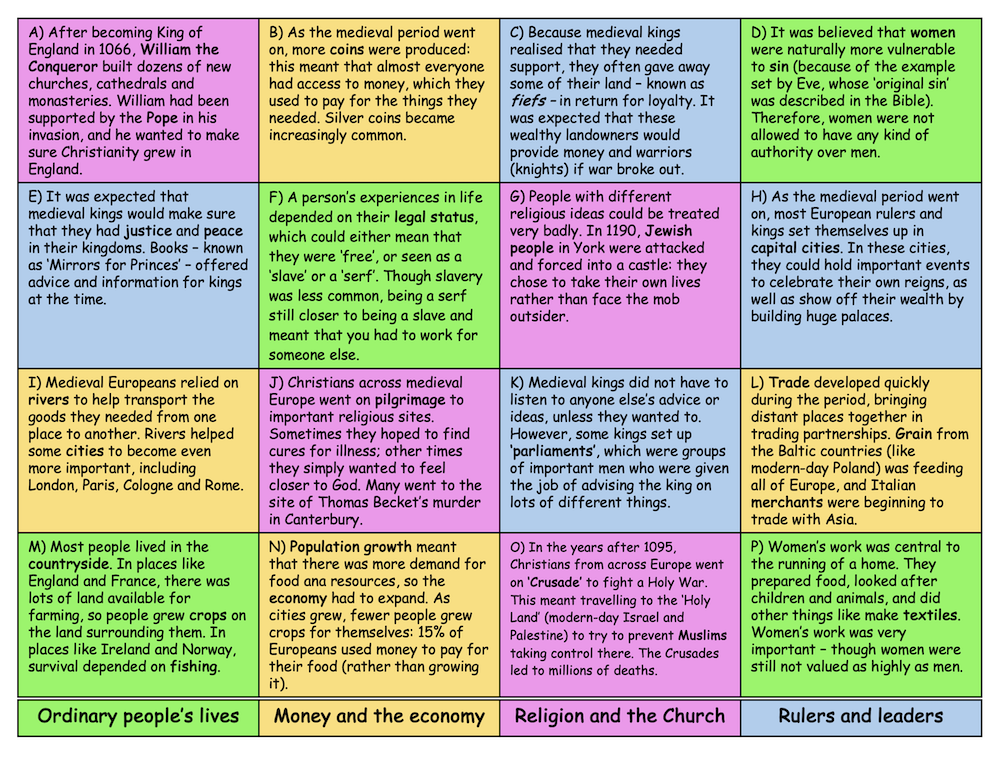
Having grouped the cards, they rank each group going from ‘most ignorant and barbaric’ to ‘least ignorant and barbaric’.
This helps them to see much more nuance in ordinary peoples’ lives.
They then finish by looking at the Horrible Histories ‘Measly Middle Ages’ and re-designing it in light of their new knowledge to give a more accurate view:
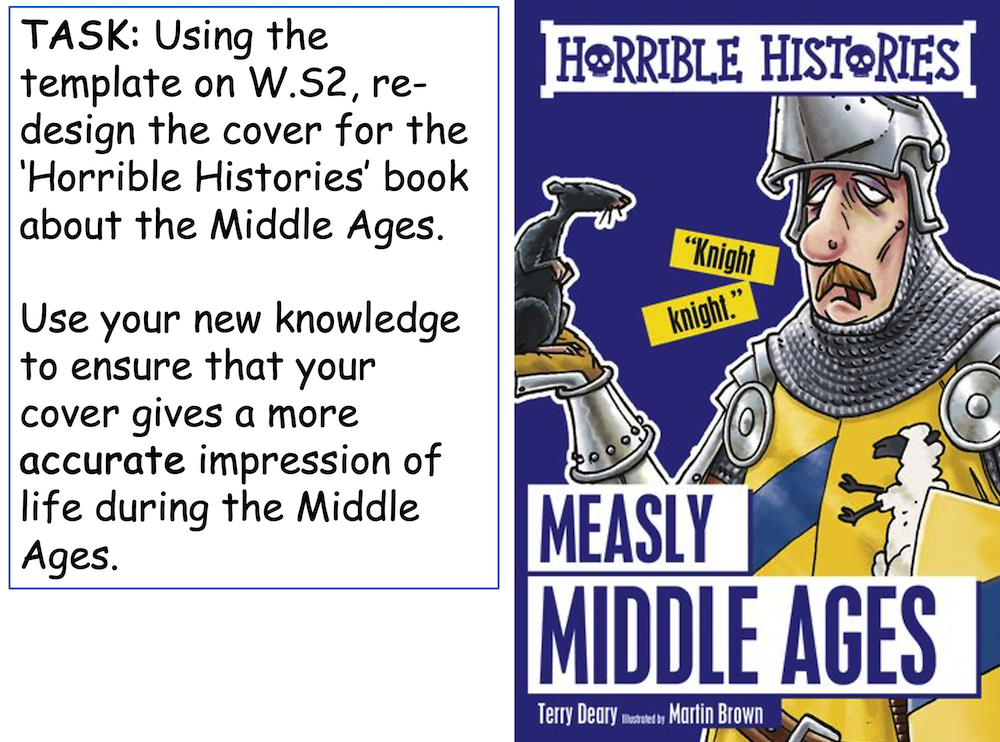
You can sign up for free basic membership. This means you can download this lesson for free here.
Idea 2: Changing the perspective on Medieval Life
At KS3 the Medieval Period seems to include the Normans, ordinary lives, the Black Death and the Peasants Revolt.
So why not sprinkle in some diversify here and add this one off lesson to your ‘ordinary lives’ lessons.
The lesson asks the question ‘What was it like to be disabled in Medieval England?’
Pupils then go on an identify disability aids used in this period:
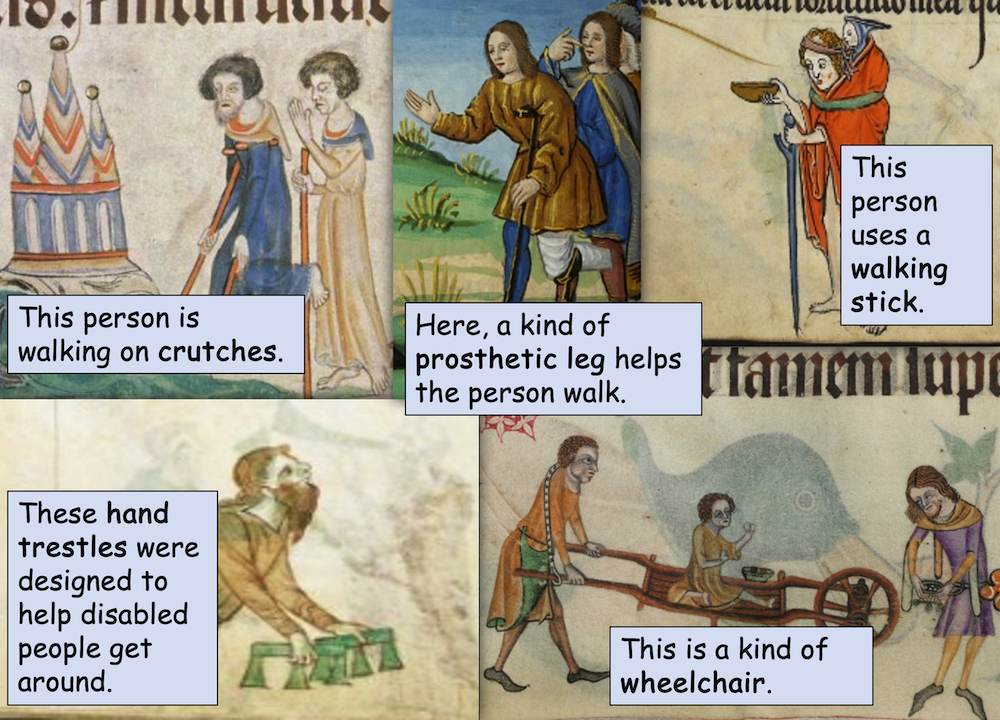
Next your pupils will read a set of clues about what it was like to be disabled in this period.
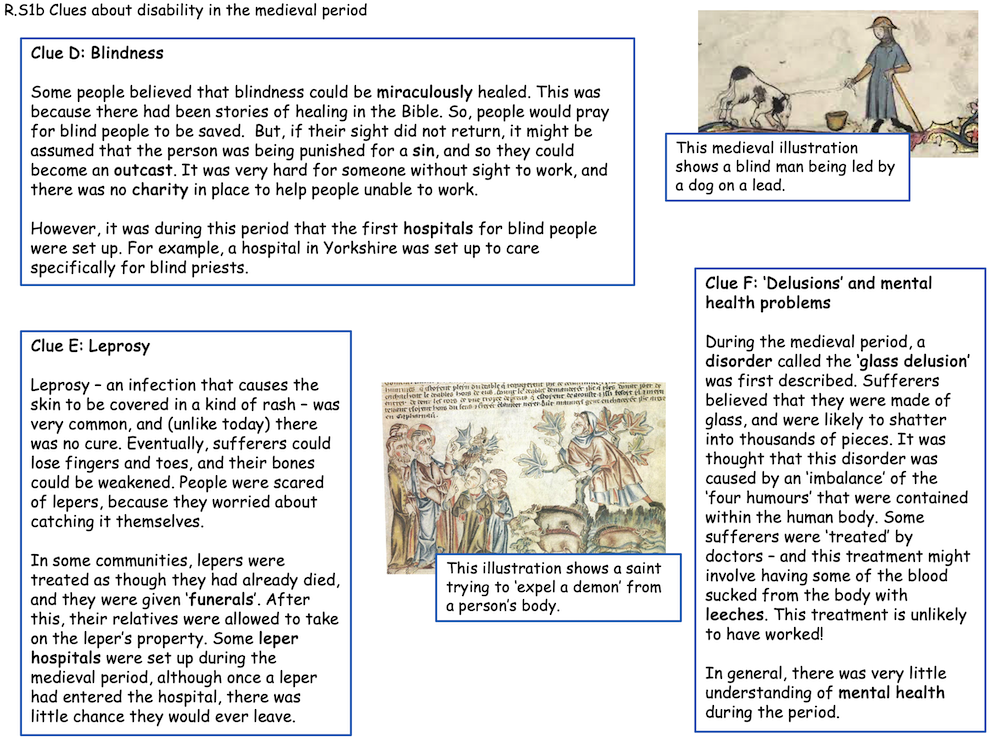
They plot these on a chart which helps them decide how well cared for and accepted disabled people were in medieval society:
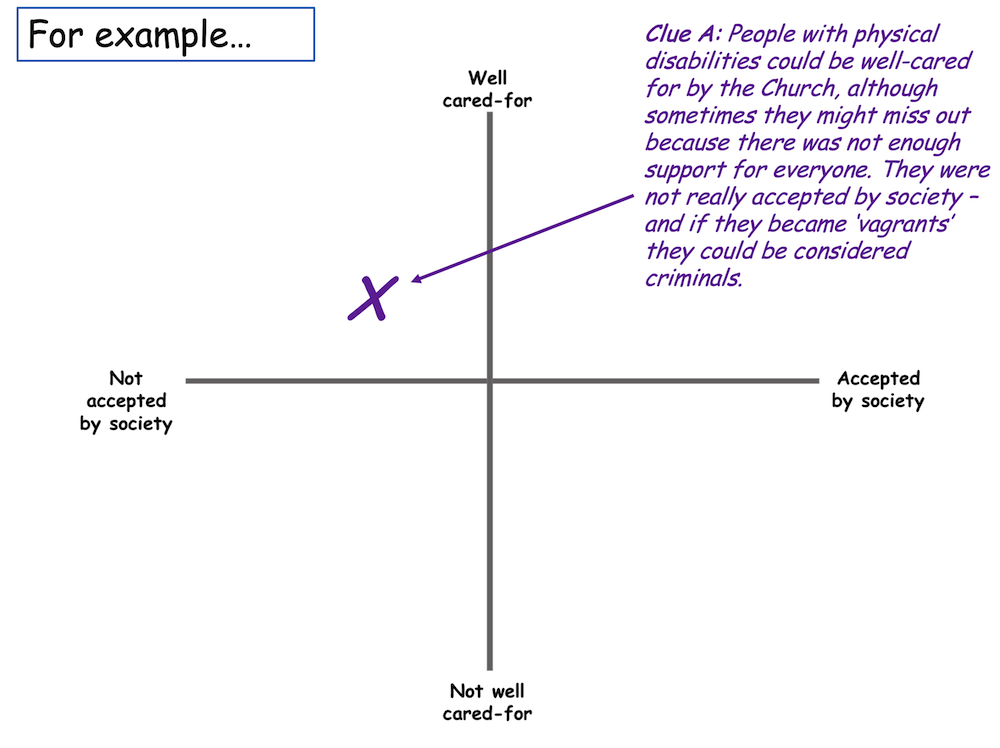
The end task sees them writing a blog post sharing their new knowledge and answering the enquiry question.
Basic members can download this lesson for free here.
Idea 3: Analysing the impact of the Slave Trade on Black Britains
Many departments teach the Slave Trade. This one off lesson considers the impact the slave trade had the experience of Black migrants living in England 1500 -1750.
You could easily add this to your curriculum. The lesson starts by showing how some black migrants had a positive experience in England in this period:
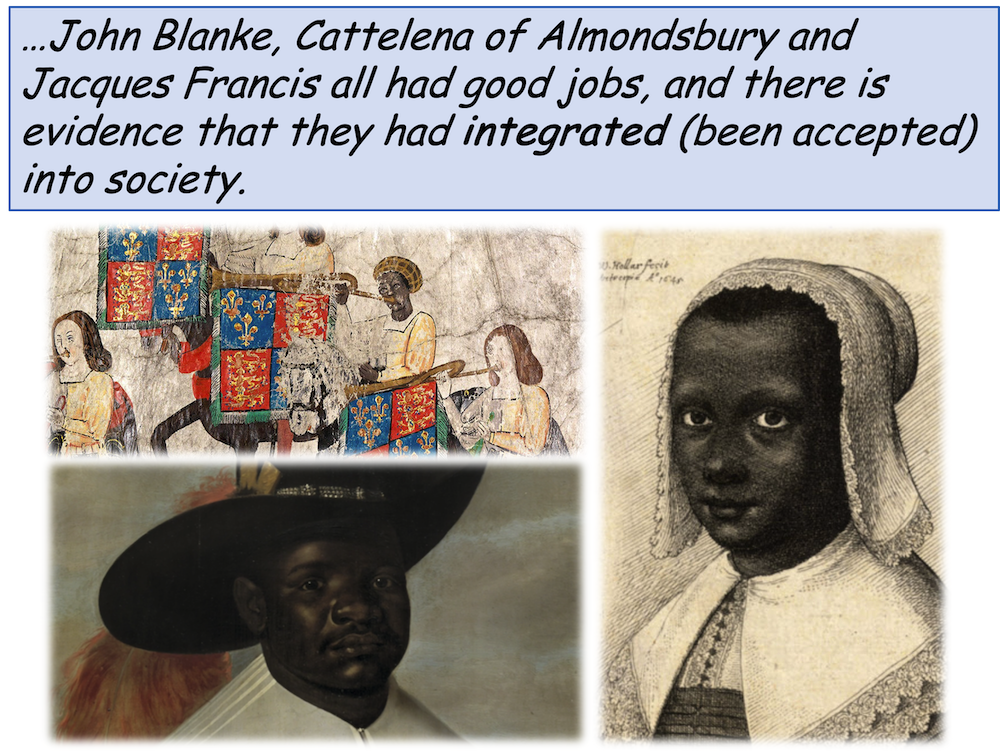
This is contrasted with others who had a more negative experience:
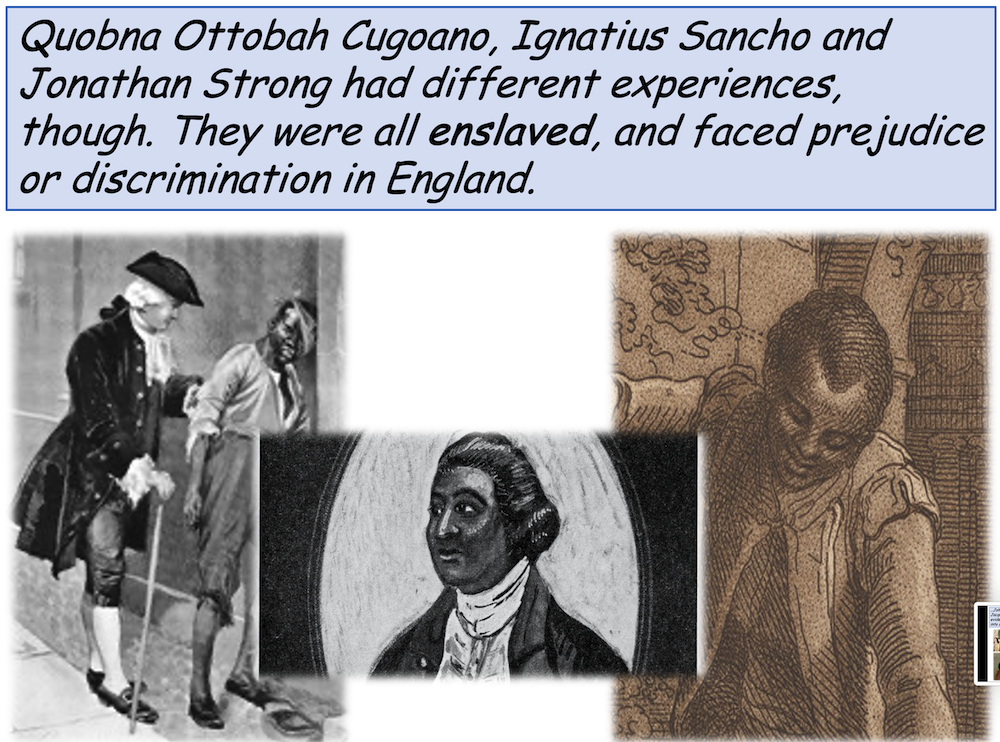
So, why were different peoples’ experiences of life in Britain so different?
Next they test this hypothesis. Did the experience of black people in England really worsen over time? How did England become involved in the slave trade, and what impact did this have on the experiences of black migrants?
Again they start by classifying some new information about different experiences. This time things are grouped in the following ways:
- Work and jobs
- Rights and status
- Religion and Community
- Freedom and Slavery
Pupils read each statement and circle the relevant symbol.
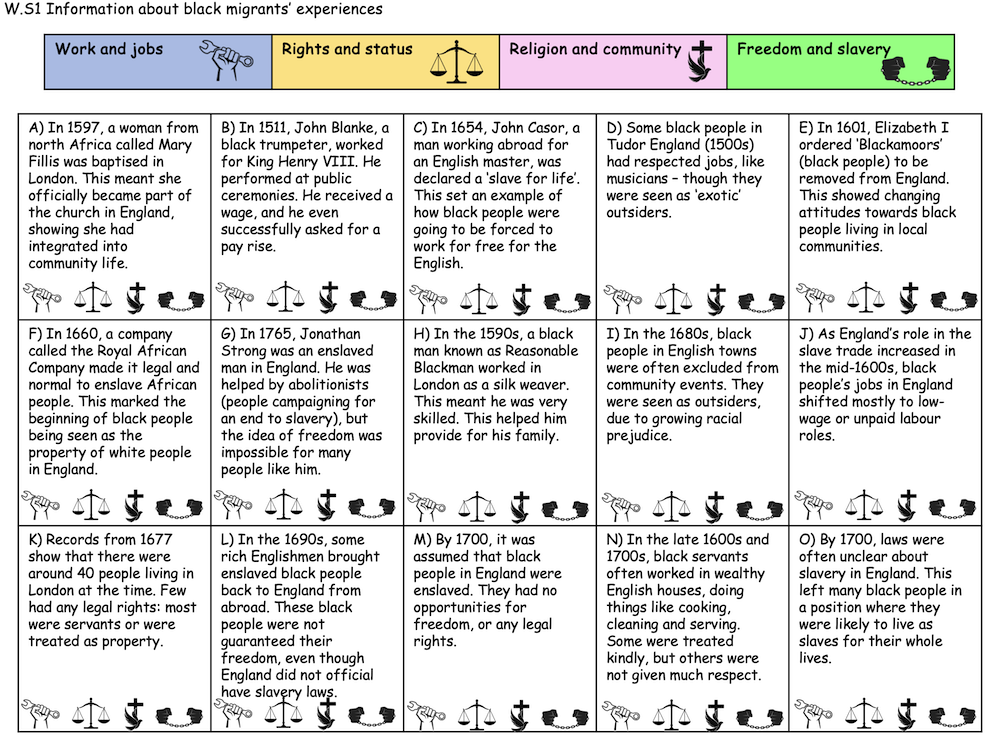
Having done this they plot each symbol on their graph:
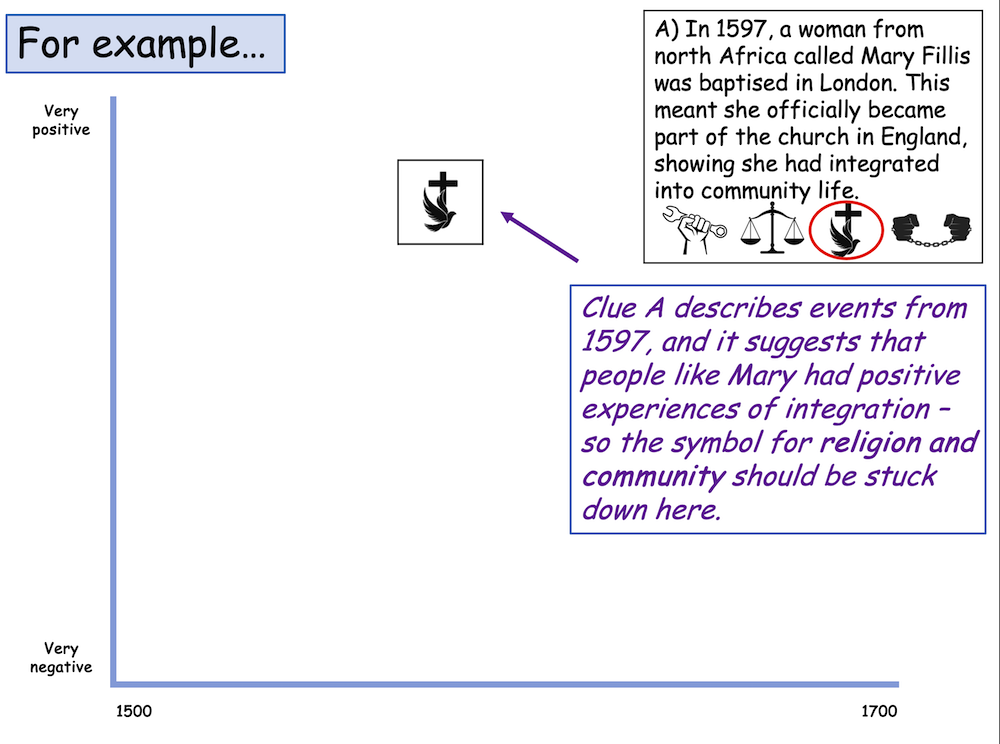
Having completed this, they see that early in the period, experiences were positive. However, by around 1600 things began to change and experiences worsened.
Next you introduce some events that happened. Do these events help to explain the change?
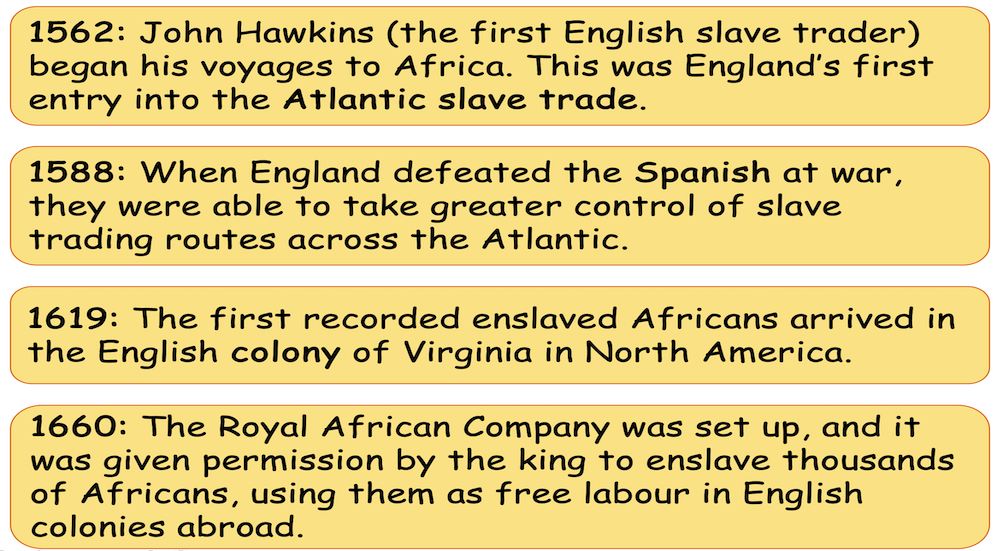
They then pull all of this together by using ‘change’ vocabulary to answer the enquiry question.
You can download this lesson here.
If you wanted more resources and lessons to fully diversify your curriculum, look at the HRC fully diverse curriculum.
It includes all lesson resources, knowledge organisers and assessments too.


